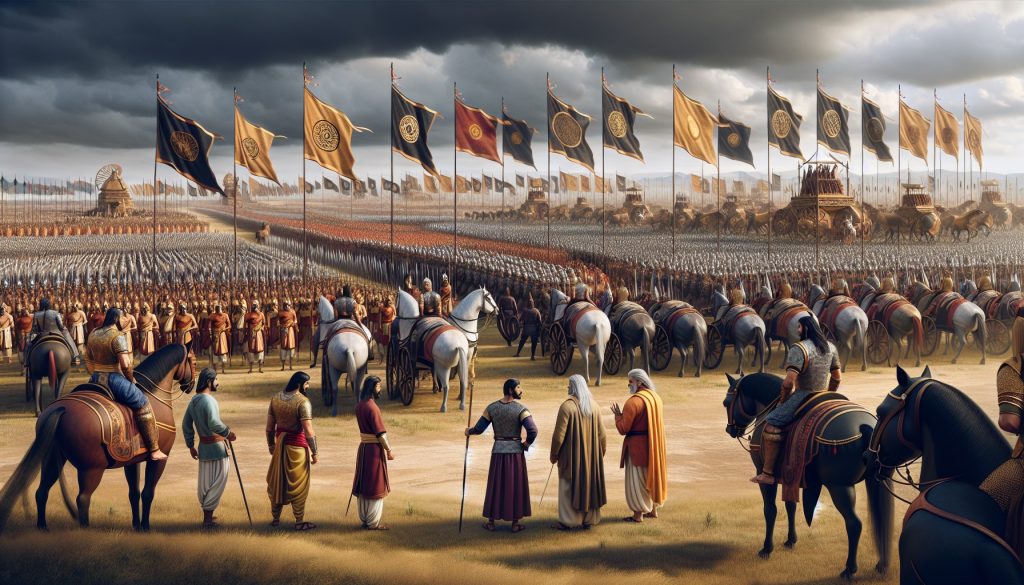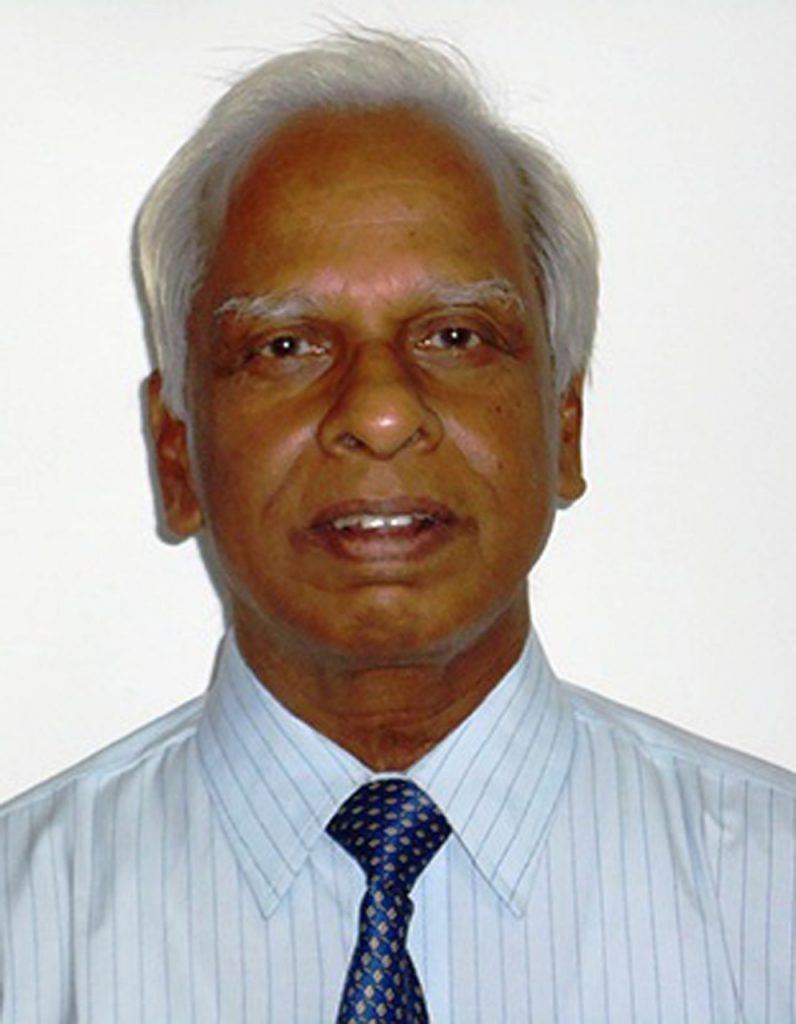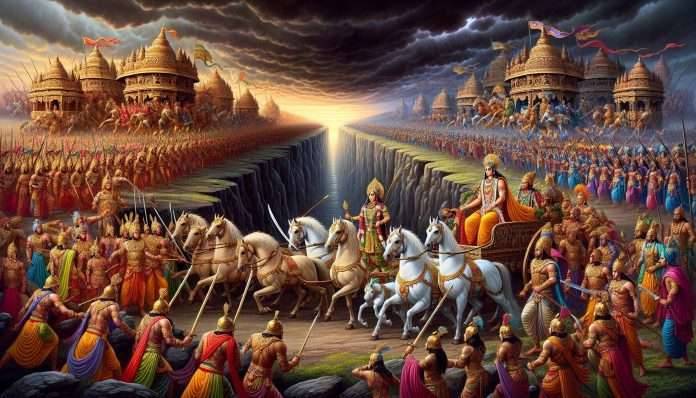The story of Belalasena occurs in Sarala Mahabharata. In VyasaMahabharata, there is no Belalasena episode or an equivalent of it. Belalasena was Bhima’s son. Let us set aside details about his meeting Krishna on his way to the battlefield and about why he happily gave his head to Krishna, when he asked for it. Granting his request to witness the war, Krishna allowed the severed head to live and witness it. His head was placed in a vantage position, from where he could see the war. He saw the happenings in the war from the beginning to the end.
In Vyasa Mahabharata, Sanjaya, the minister of the Kauravaking Dhritarashtra,was witnessing the war, sitting with the king and narrating to him what was happeningon the battlefields of Kurukshetra, where his army was fighting with the army of the Pandavas. Sage Vyasa had given him thespecial vision because of whichhe could see the actions taking place at a distance.That was how the blind old king, without participating in the war physically, was experiencing it.
In Sarala Mahabharata, Sanjaya informed the blind,old father, who was no longer the king, having given the kingdom of Hastinapurato his eldest son Duryodhana, about the happenings in the war and he also commented on them. But he did not do so becauseof any special vision given to him by Vyasa or anyone else. He himself fought in the battlefield for the Kauravasand also obtained information about whathad happened in different parts of the war field from others and used his experience, intelligence and insight tocomment on the important events in the war and even make predictions about what was going to happen in the battlefield on the following day.In sum, there is no Belalasena in Vyasa’s version and there is no Sanjaya with special vision inSarala’s version. It is certainly an interesting asymmetry between the source text in Sanskrit and its retold version in Odia.
The war ended and it was time for the Pandavas to claim credit for the victory. Present with the Pandava brothers at that time were Draupadi, Subhadra, Kunti and Krishna. Bhima said the war was won solely because of him since he had killed all the Kaurava brothers (barring Durdaksha, who had changed sides and fought for the Pandavas). Arjuna said the war would never have been won but for him. Outraged, Nakula claimed credit for himself. Sahadeva said that he had told the death secrets of formidable warriors; so it was for him that the Pandavas won the war. Yudhisthira said he was steadfast in dharma and it was indeed this that brought victory to them.
Draupadi said that she was an exceptionally virtuous woman (mahasati); it was this power that destroyed the Kauravas. Subhadra, Arjuna’s wife, told them that all of them were dead wrong. She was indeed the cause. The Kauravas killed Abhimanyu, her son, and her brother, Krishna, avenged his killing by having them wiped out. Finally Kunti spoke. She said that she had undergone great hardshipfor years and as she suffered, she prayed to Dharma (god of justice). The Pandavas’ victory was the god’s answer to her prayer. Soon they started fighting over the issue of credit.
To settle the issue, Krishna brought them to the severed head and asked him what he had seen and who could be justly credited for the victory. The severed head told him what hehad seen: no human or demon had killed anyone. A chakra (discuss), dazzling with the glareand the brilliance of a myriad suns, unceasingly moved to and fro – from one part of the war field tothe other, killing the fighters.

This can be viewed asan implementation of a very important idea inthe eleventh chapter of Srimad Bhagavad Gita, namely that the Supreme Lord had already killedall those who were to fall in the war. The warriors would only act as the killer; such is His leela (play) andsuch is how the cosmic and the laukika (mundane / the level of sense experience) levels connect in the text.What is real, the truth, at the laukika level is not the truth at the cosmic level; it is only the illusion.Under the influence of maya (cosmic illusion), humans can perceive things only at the laukika level and thus take illusion as real. This is the limitation humans have to live with in the world. In Sarala Mahabharata, there is no Srimad Bhagavad Gita, but the above shows how it hadunobtrusively entered Sarala’s narrative. Because of the grace of Krishna, Belalasena had seen the reality. Freed from the bondage of maya by Krishna’s grace, he had not seen what Sanjaya had seen, namely things at the laukika level, where someone killed someone and someone else, some other. Krishna had granted him his wish to be able to witness the war. Only the one who is chosen by Him to see the transcendental reality, sees it.
To end the story of Belalasena. His story is short. He came into Sarala’s narrative to be the witness of a catastrophic, yet transformative Event and give a testimony, which would be the final word on the happenings in the Event. The testimony given, he left the narrative. But his going was not ordinary; it was indeed exceptional.
Listening to him, Bhimawas agitated in the extreme. Here was his son betraying him, instead of supporting him. He condemned him as a thoroughly unworthy and disgraceful son; one, who did not take the side of his father in a situation of conflict and belittled him in front of others. Wild with anger, he hit the head of his son with all his might. From the top of the tree-trunk, which served as a pillar and from where the head had witnessed the war, it fell on the ground and died. The father killed the son, but not in the performance of a sacrifice.
Belalasena’s story ended when Krishna absorbed his soul into him. Merged into the Supreme god Narayana, he was no longer subject to the karmic cycle. No one in Sarala Mahabharata received moksha in this sense. This can be seen as Krishna’s “return dana” for the “dana” he had received from him.
(The views expressed are the writer’s own)

Prof. B.N.Patnaik
Retd. Professor of Linguistics and English, IIT Kanpur
Email: [email protected]
(Images from the net)

